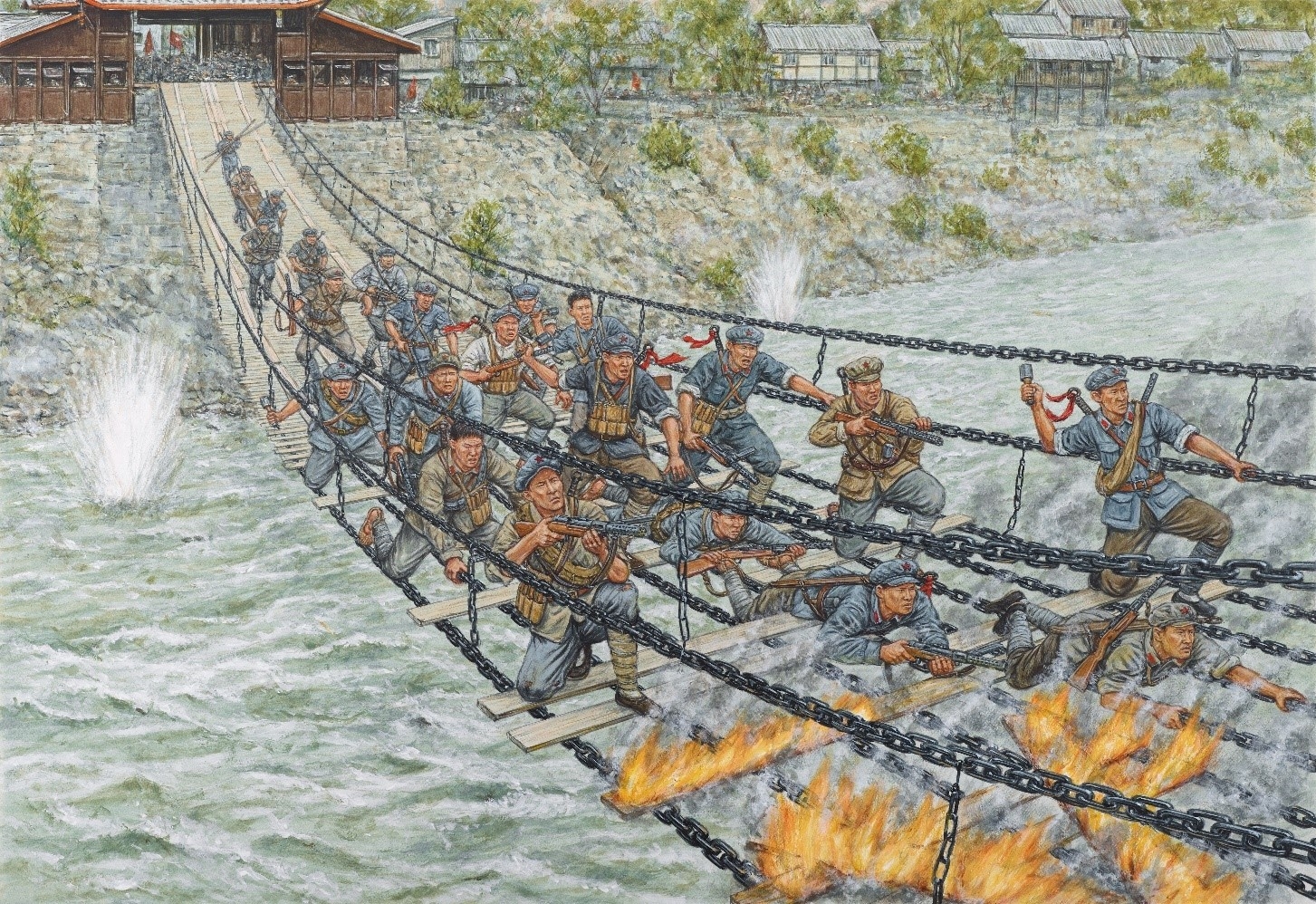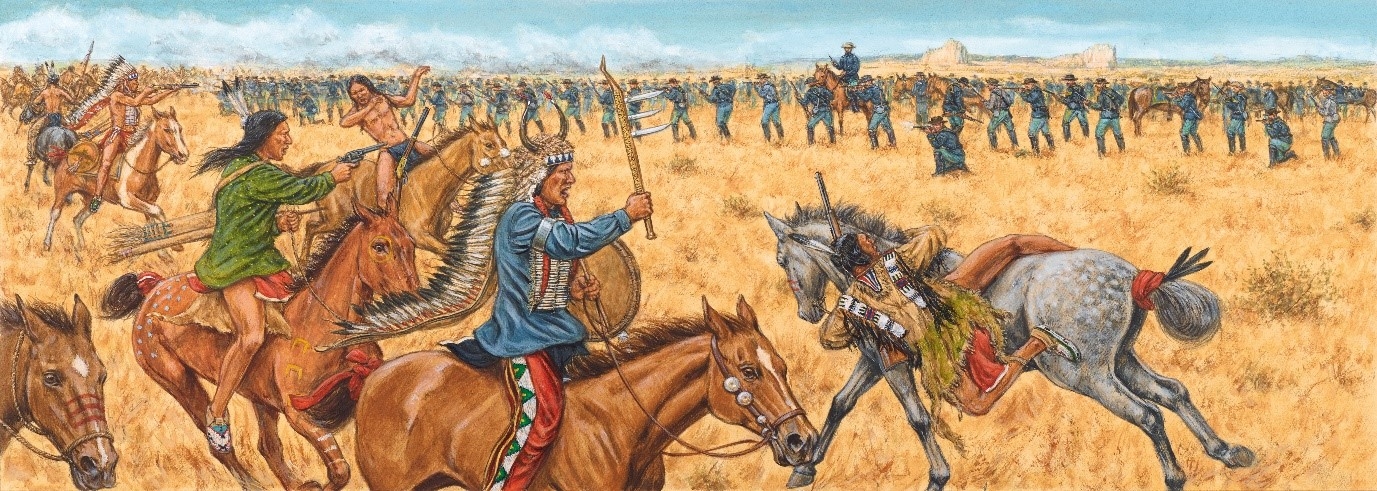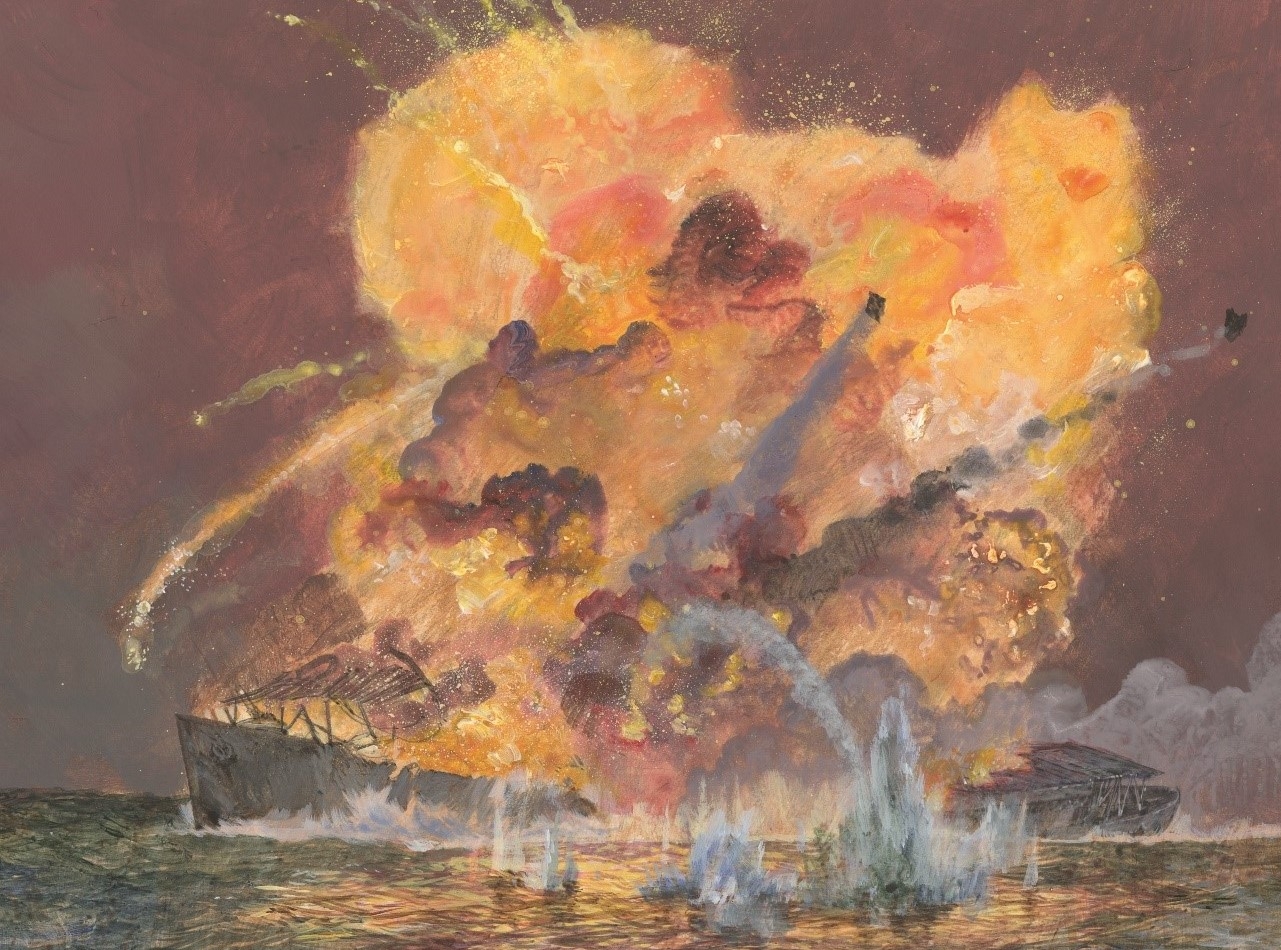In today’s blog post, we're looking at some of the artwork from our September 2019 titles. Let us know what you think in the comments section, and if there are any October publications you'd like to see the artwork from, be sure to mention it too!
Campaign 341: The Long March 1934–35 by Benjamin Lai
Artwork by Adam Hook
The first image, requested by KAL9000, comes from Campaign 341: The Long March 1934–35, and shows Mao Zedong and his forces crossing the Dadu River using the 100m-long Luding Bridge in May 1935. To stop the Communists reaching the eastern end of the bridge, the defenders set fire to some of the wooden boards on the bridge. The troops had to make their way through flames, and then began to assault the sandbagged positions guarding the bridge on the opposite bank using grenades.
Combat 43: Sioux Warrior vs US Cavalryman by Ron Field
Artwork by Adam Hook
The second piece of artwork, from Combat 43: Sioux Warrior vs US Cavalryman, depicts Sioux warriors attacking the US cavalry and infantry. Many of these Native Americans were involved in the defeat and massacre of Custer and the 7th Cavalry at the Little Bighorn. They are desperate to recover their ponies, capture the worn-out US cavalry horses, and free the Native Americans taken prisoner. Mounted on fleet ponies, a group defy the carbine gunfire, attempting to probe and find a weak point in the US forces’ lines. Urging the warriors forward, He Dog wears a trailer war bonnet and beaded war shirt and brandishes a studded knife club and shield. With a Model 1873 Winchester repeating rifle in hand, another prominent Sioux leader called Kicking Bear leans behind his galloping pony to avoid the flying bullets. In his eagerness for revenge, a young warrior ventures ahead of the others and is knocked off his pony by a well-aimed shot from a trooper in the long blue line.
New Vanguard 274: British Escort Carriers 1941–45 by Angus Konstam
Artwork by Paul Wright
Lastly, the final image, from New Vanguard 274: British Escort Carriers 1941–45, portrays the sinking of HMS Avenger. In November 1942, the HMS Avenger was escorting a homeward-bound convoy. It was spotted by the German submarine U-155 and on 15 November at 4.14am, Kapitänleutnant Adolf Piening fired four torpedoes at the convoy. One torpedo hit Avenger on her port side. This single torpedo detonated amidships in Avenger, causing a huge explosion. The carrier was then shrouded in smoke, and when it cleared Avenger had disappeared. Other witnesses claim she virtually disintegrated. It appears the detonation ignited the ordnance in the carrier’s bomb room, and the resulting explosion tore the central portion of the ship apart. It almost certainly also ignited the ship’s store of aviation fuel, which added to the scale of the catastrophe. Of her crew of 528 men, there were only 12 survivors.





Comments
You must be logged in to comment on this post. Click here to log in.
Submit your comment